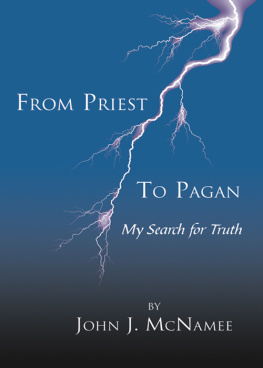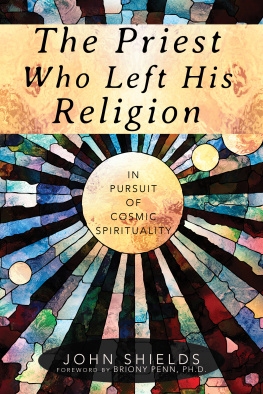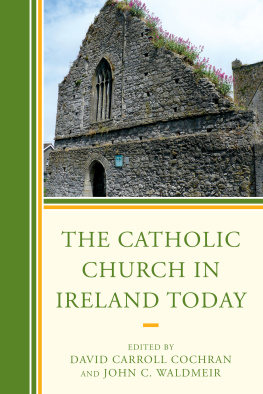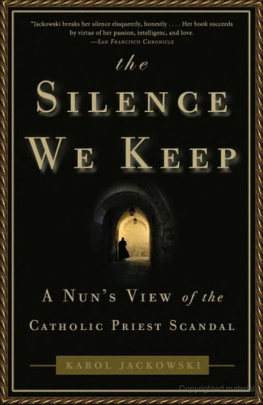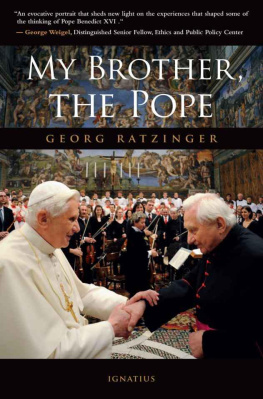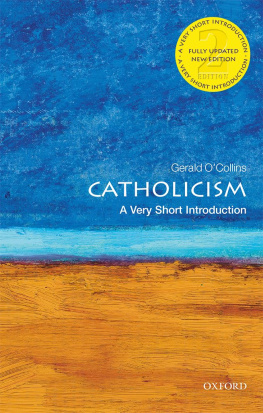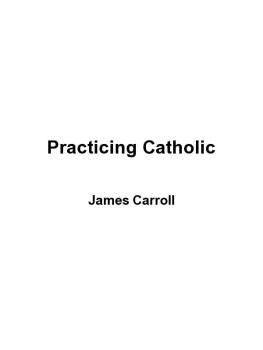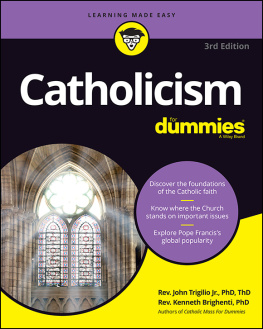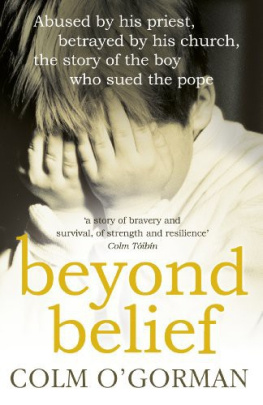All rights reserved. No part of this book shall be reproduced or transmitted in any form or by any means, electronic, mechanical, magnetic, photographic including photocopying, recording or by any information storage and retrieval system, without prior written permission of the publisher. No patent liability is assumed with respect to the use of the information contained herein. Although every precaution has been taken in the preparation of this book, the publisher and author assume no responsibility for errors or omissions. Neither is any liability assumed for damages resulting from the use of the information contained herein.
Copyright 2012 by John J. McNamee
ISBN 978-0-7414-7482-7 Paperback
ISBN 978-0-7414-7483-4 eBook
Library of Congress Control Number: 2012935830
Published June 2012

INFINITY PUBLISHING
1094 New DeHaven Street, Suite 100
West Conshohocken, PA 19428-2713
Toll-free (877) BUY BOOK
Local Phone (610) 941-9999
Fax (610) 941-9959
www.buybooksontheweb.com
For my parents in grateful remembrance, for my wife and children in grateful appreciation, and for four special friends who helped me more than I can ever express: Philippe Mbiame, Maniragaba Balibutsa, Abiodun Ogundare and Eni Kanu

My classmates from the American College at the University of Louvain, Belgium, came together in February 2011 for a reunion, as we are wont to do periodically. About half of them are still priests, the other half married. Almost all are believing Catholics, some liberal, some conservative. Two of us no longer endorsed any particular theory of god or life after death, no longer belong to any church. A frank discussion and several pointed questions about my convictions prompted me to put down on paper why I resigned as a priest, why I resigned from the Catholic Church.
Many friends helped me come to a fuller understanding of the multifaceted world we live in. Along the way four friends have contributed to my life in especially significant ways for which I shall always be profoundly grateful: Philippe Mbiame, Abiodun Ogundare, and Maniragaba Balibutsa when I studied at Tubingen University in Germany, and Eni Kanu when I returned to Tulsa, Oklahoma.
I have made every effort to present people, experiences and conversations accurately. My Louvain classmate, Larry Reilly, provided critical reviews of early drafts. My wife, Anita, son, Worby and brother, Liam, read the entire manuscript. So did Mazi Eni Kanu and Connie Kelly. All of them offered helpful suggestions. I alone, however, am responsible for any errors of fact or interpretation.

I spent the first 16 years of my life in a small rural Irish community and two years in an Irish seminary. In Ireland at the time the Roman Catholic Church was all-pervasive. It was there that I learned the fundamental facts of Catholicism as understood and practiced locally by family and friends, in fact by the whole community. In the parish of Dromard, County Longford, almost everyone was Catholic. Those years growing up there established my fundamental religious beliefs as a Catholic. These beliefs and related practices were so intertwined with daily life they can best be presented by a look at life in that community.
In Dromard Parish I grew up convinced Catholicism was the one and only true church, its values absolute. There was nothing more important than religion. Everything in life took its meaning from its religious significance. Whatever the motivation of peoples actions, the ultimate value and interpretation of them depended on their religious significance. God and the devil, heaven and hellfire, saints and relics, were tangible parts of life, influencing the daily decisions people made. Good and bad were not just issues of the moment, but had eternal consequences, everyone believed. Everyone locally believed in life after death, and they believed the only way to heaven was the Catholic way.
The role of the Catholic Church was not limited to the sphere of religion. The local civic organization and the local social structure revolved around the Catholic parish. The parish priest was the manager of the local schools. Primary and secondary schools, though technically public, were effectively religious schools. Political initiatives were spearheaded on a parish basis. Gaelic football teams competed on a parish basis. And above all this the priest presided, unchallenged and unchallengeable, with as absolute authority as any human being is likely to have, even though when it came to the nitty-gritty of life, as one local wag put it, the priests were all theory and no practice.
Virtually every local Catholic believed that getting to heaven was a thing of great uncertainty, as the sermons on Sunday and religious instruction in the schools made clear. Apparently those who did usually spent considerable time in purgatory getting cleansed of the effects of sin. A good life, it seemed, could not guarantee heaven for, as the priests explained in sermon after sermon, one could lead a blameless life, then commit one mortal sin and go to hell for all eternity. Their very vivid descriptions of burning in hell left little to the imagination and certainly got peoples attention. Almost everyone went to church on Sunday, a prerequisite if one wanted a shot at getting to heaven, for missing Sunday mass was a serious sin, we were repeatedly told.
In daily life there was nothing secretive about religious practices. The principal decorations on the walls of peoples homes were framed holy pictures, usually of the Sacred Heart, the Blessed Virgin and, occasionally, a saint or two, symbols that were understood to be inherently Catholic. Most families had a shrine to the Sacred Heart: a framed picture in front of which a miniature oil lamp, with a red glass shade, burned day and night. When electricity finally reached the area in the 1950s, these oil lamp were replaced by red light bulbs with the shape of a cross inside. In times of trouble people made bargains with god. They promised to do penance, to fast or give up something they liked (a favorite was sugar or milk in their tea), do novenas, go to Lough Derg---one of the last sites of medieval penance in Europe. Families prayed the rosary every night. And visitors who happened on a family saying the rosary joined in. People prayed novenas, especially in times of crisis.
There were clear role models: the saints. Popular lives of the saints, however, portrayed a type of human being that no reasonable person could aspire to emulate. The one that I still remember vividly was a life of St. Lawrence that portrayed him calmly allowing himself to be burned to death, but not before he commented: I am done now. Turn me over and eat. Even to the ten-year old that I was when I read that, it was clearly ridiculous. Later I came to know just how little fact there was in accounts of the lives of saints.
Another model of virtue proposed by the anti-alcohol Pioneer Total Abstinence Association was Matt Talbot, a reformed alcoholic who was found dead in a Dublin street in 1925. The archbishop of Dublin was aggressively pushing to have him declared a saint, though he only made it to Venerable under Paul VI in 1975. Talbot not only gave up demon rum, but took to wearing chains and cords around his body, legs and arms for maximum discomfort and penance, and therefore for maximum reward later in heaven. Doing so was recommended to him by a prominent professor of philosophy at a Dublin seminary. People were awed by his example, for he took to the next level what many would like to do: expiate their sins. It was a more extreme version of giving up something for Lent. It was consistent with what I later learned in the seminary in Ireland, best summed up the famous quote: I am a worm and no man.

